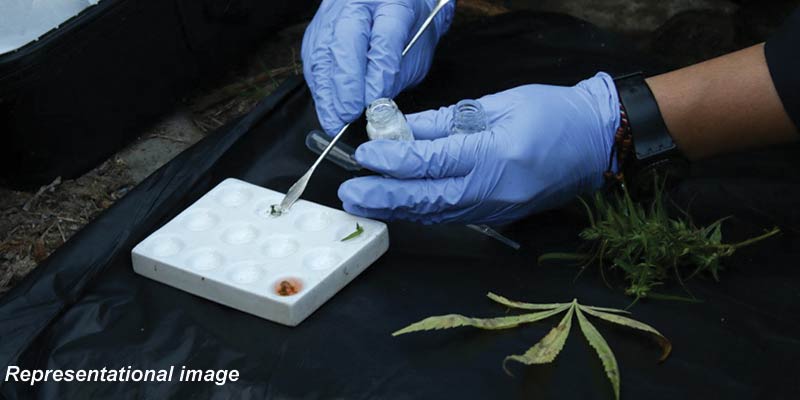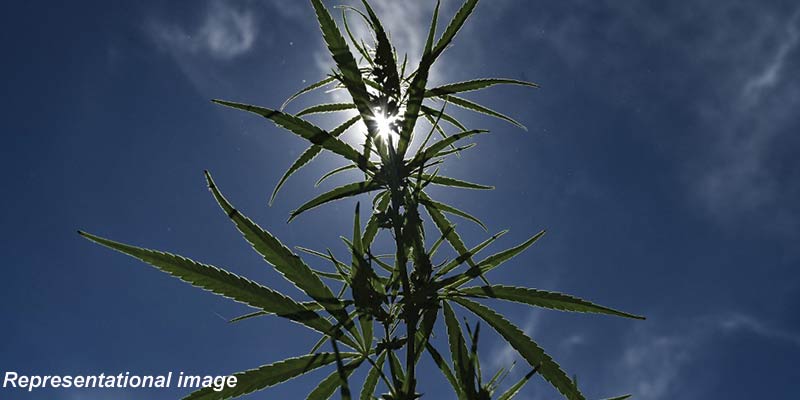- World
- Jun 26
20% rise in drug users globally in a decade
• The International Day against Drug Abuse and Illicit Trafficking, or World Drug Day, is commemorated every year on June 26 and aims to increase action in achieving a drug-free world.
• This year’s campaign recognises that “effective drug policies must be rooted in science, research, full respect for human rights, compassion, and a deep understanding of the social, economic, and health implications of drug use”.
• The United Nations Office on Drugs and Crime (UNODC) released its annual World Drug Report warning that the number of users is ticking up alongside a rise in trafficking.
• Drug production, trafficking, and use continue to exacerbate instability and inequality, while causing untold harm to people’s health, safety and well-being.
• There is an urgent need to provide evidence-based treatment and support to all people affected by drug use, while targeting the illicit drug market and investing much more in prevention.
Highlights of World Drug Report 2024:
• The emergence of new synthetic opioids and a record supply and demand of other drugs has compounded the impacts of the world drug problem, leading to a rise in drug use disorders and environmental harms.
• The number of people who use drugs has risen to 292 million in 2022, a 20 per cent increase over 10 years.
• Cannabis remains the most widely used drug worldwide (228 million users), followed by opioids (60 million users), amphetamines (30 million users), cocaine (23 million users), and ecstasy (20 million users).
• Nitazenes – a group of synthetic opioids which can be even more potent than fentanyl – have recently emerged in several high-income countries, resulting in an increase in overdose deaths.
• Though an estimated 64 million people worldwide suffer from drug use disorders, only one in 11 is in treatment. Women receive less access to treatment than men, with only one in 18 women with drug use disorders in treatment versus one in seven men.
• In 2022, an estimated 7 million people were in formal contact with the police (arrests, cautions, warnings) for drug offences, with about two-thirds of this total due to drug use or possession for use.
• In addition, 2.7 million people were prosecuted for drug offences and over 1.6 million were convicted globally in 2022, though there are significant differences across regions regarding the criminal justice response to drug offences.
Drug trafficking is empowering organised crime groups
Drug traffickers in the Golden Triangle are diversifying into other illegal economies, notably wildlife trafficking, financial fraud, and illegal resource extraction. Displaced, poor, and migrant communities are suffering the consequences of this instability, sometimes forced to turn to opium farming or illegal resource extraction to survive, falling into debt entrapment with crime groups, or using drugs themselves. These illicit activities are also contributing to environmental degradation through deforestation, the dumping of toxic waste, and chemical contamination.
Criminal activity and trafficking are common in remote regions with multiple borders and limited governance. Tri-border areas, such as the Triple Frontier in South America, share similarities with the Golden Triangle in South-East Asia in terms of the varied nature of the illicit economies generated there. Both regions are notorious for drug trafficking, with diverse criminal organisations collaborating with armed groups, sometimes out of strategic political or financial needs. In the Triple Frontier area of Argentina, Brazil and Paraguay, drug trafficking organisations capitalise on the porous borders, engaging in money-laundering and the smuggling of drugs and counterfeit goods. Similarly, the Golden Triangle, spanning the Lao People’s Democratic Republic, Myanmar and Thailand, is a hub for opium and synthetic drug production and, more recently, wildlife trafficking and illicit resource extraction.
Methamphetamine is now the dominant drug according to seizure data, with seizures having grown fourfold between 2013 and 2022. Methamphetamine from the Golden Triangle now reaches markets across the region and elsewhere in Asia and Oceania. Criminal groups, benefiting from the illegal trade in opium and methamphetamine, have recently diversified into other illicit activities, including online scams, wildlife trafficking and money-laundering, often using casinos and special economic zones to conceal their operations.
Implications of opium ban in Afghanistan
Following the drastic decrease of Afghanistan’s opium production in 2023 (by 95 per cent from 2022) and an increase in production in Myanmar (by 36 per cent), global opium production fell by 74 per cent in 2023. The dramatic contraction of the Afghan opiate market made Afghan farmers poorer and a few traffickers richer. Long-term implications, including on heroin purity, a switch to other opioids by heroin users, and/or a rise in demand for opiate treatment services may soon be felt in countries of transit and destination of Afghan opiates.
Consequences of cocaine surge
A new record high of 2,757 tonnes of cocaine was produced in 2022, a 20 per cent increase over 2021. Global cultivation of coca bush, meanwhile, rose 12 per cent between 2021 and 2022 to 355,000 hectares. The prolonged surge in cocaine supply and demand has coincided with a rise in violence in states along the supply chain, notably in Ecuador and Caribbean countries, and an increase in health harms in countries of destination, including in Western and Central Europe.
The main cocaine trafficking flows continue to run from the Andean region to other countries in the Americas and to Western and Central Europe, the second largest cocaine market after North America, although cocaine reaches all regions of the world. More than 90 per cent of reporting countries have seized the drug since 2019, and the quantity of cocaine seized globally, after years of marked increase, stabilised at a record level of just over 2,000 tonnes in 2022.
Impact of cannabis legalisation
As of January 2024, Canada, Uruguay, and 27 jurisdictions in the United States had legalised the production and sale of cannabis for non-medical use, while a variety of legislative approaches have emerged elsewhere in the world. In these jurisdictions in the Americas, the process appears to have accelerated harmful use of the drug and led to a diversification in cannabis products, many with high-THC content. Hospitalisations related to cannabis use disorders and the proportion of people with psychiatric disorders and attempted suicide associated with regular cannabis use have increased in Canada and the United States, especially among young adults.
Psychedelic “renaissance” encourages broad access to psychedelics
In recent decades, driven in part by the globally increasing burden of disease attributed to mental health disorders, there has been a renewed interest in the therapeutic use of different psychedelic substances (for example LSD, MDMA, psilocybin, ketamine), that are controlled under the international drug Conventions, and investment in clinical research has shown the potential for their use, coupled with psychotherapy, in the treatment of a range of mental health disorders.
Though interest in the therapeutic use of psychedelic substances has continued to grow in the treatment of some mental health disorders, clinical research has not yet resulted in any scientific standard guidelines for medical use. However, within the broader “psychedelic renaissance”, popular movements are contributing to burgeoning commercial interest and to the creation of an enabling environment that encourages broad access to the unsupervised, “quasi-therapeutic” and non-medical use of psychedelics. Such movements have the potential to outpace the scientific therapeutic evidence and the development of guidelines for medical use of psychedelics, potentially compromising public health goals and increasing the health risks associated with the unsupervised use of psychedelics.
Manorama Yearbook app is now available on Google Play Store and iOS App Store



